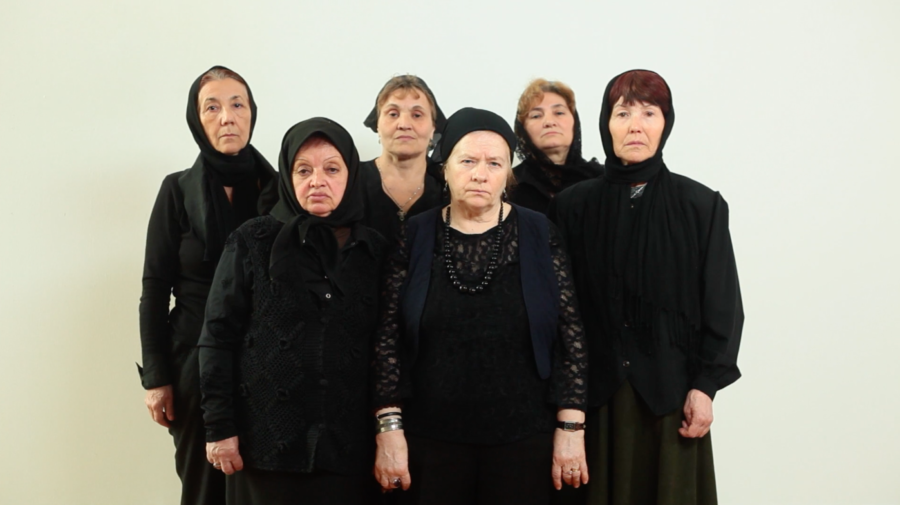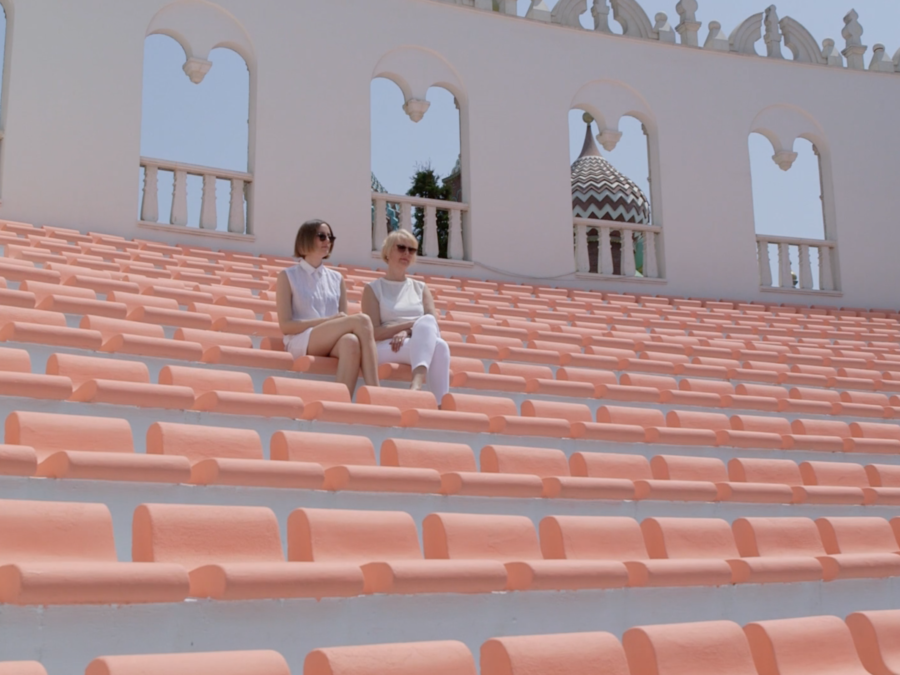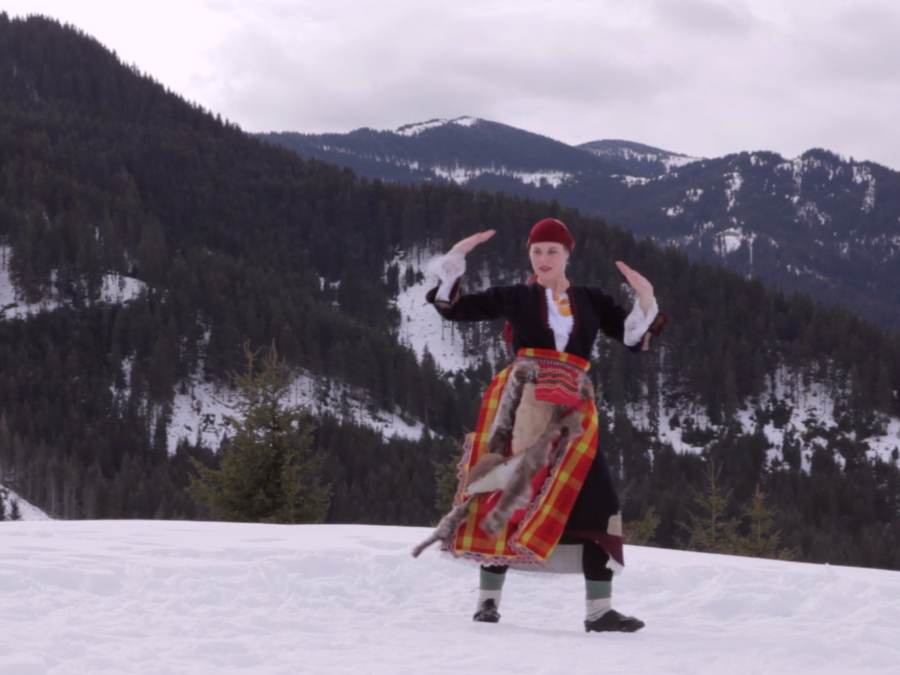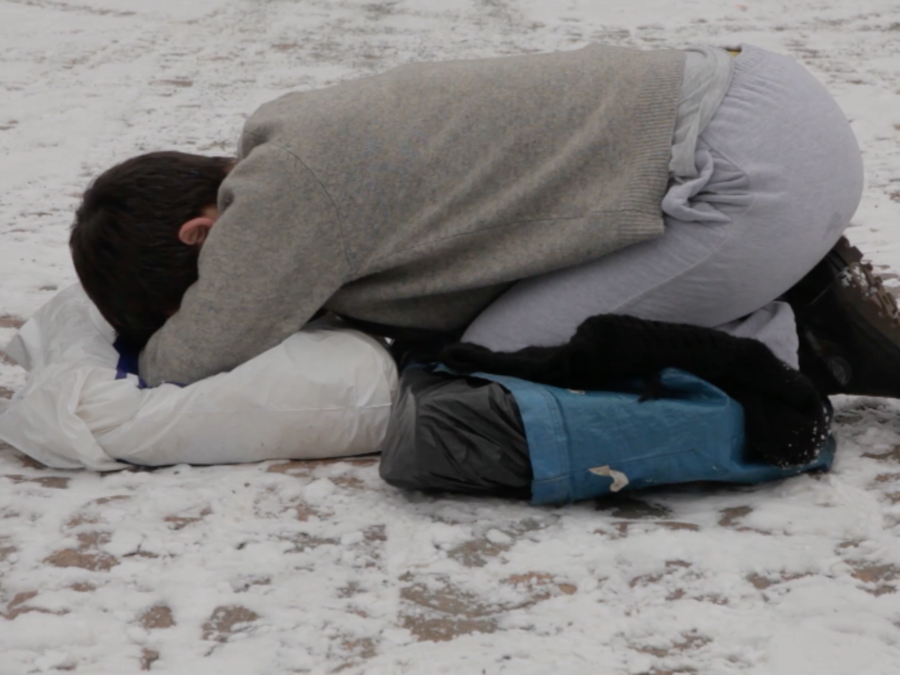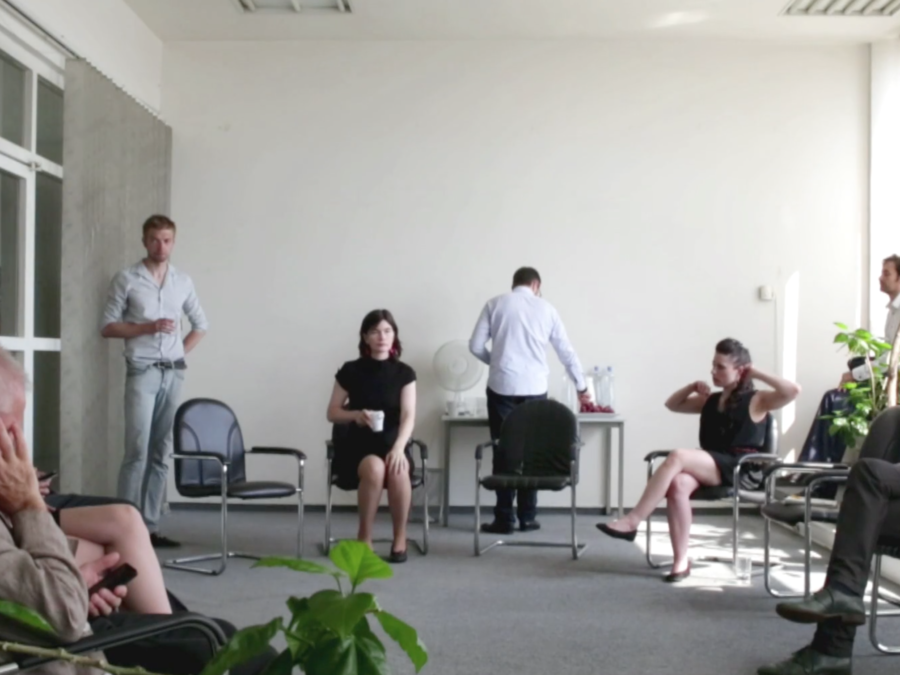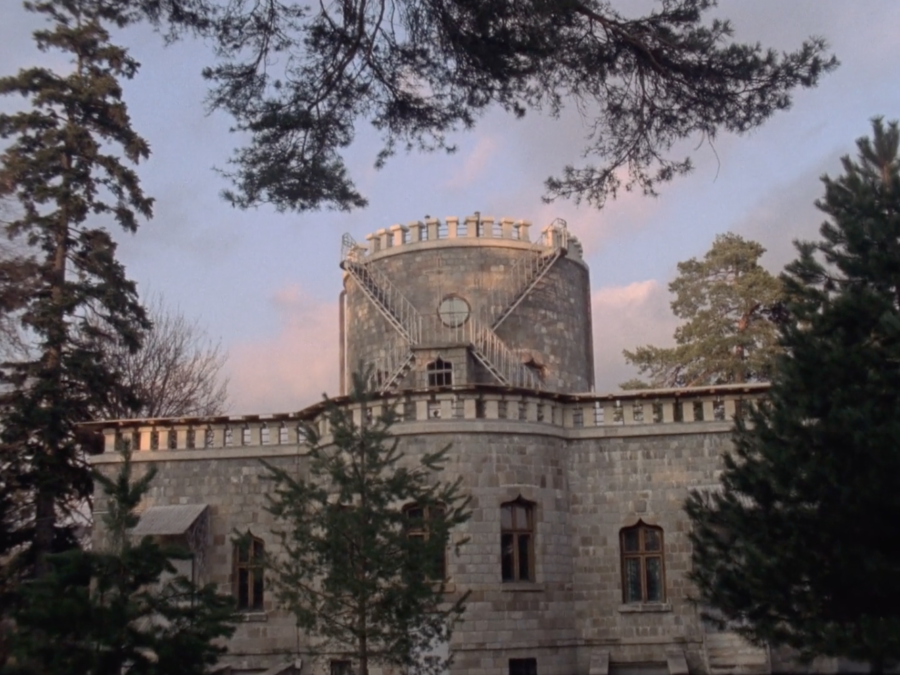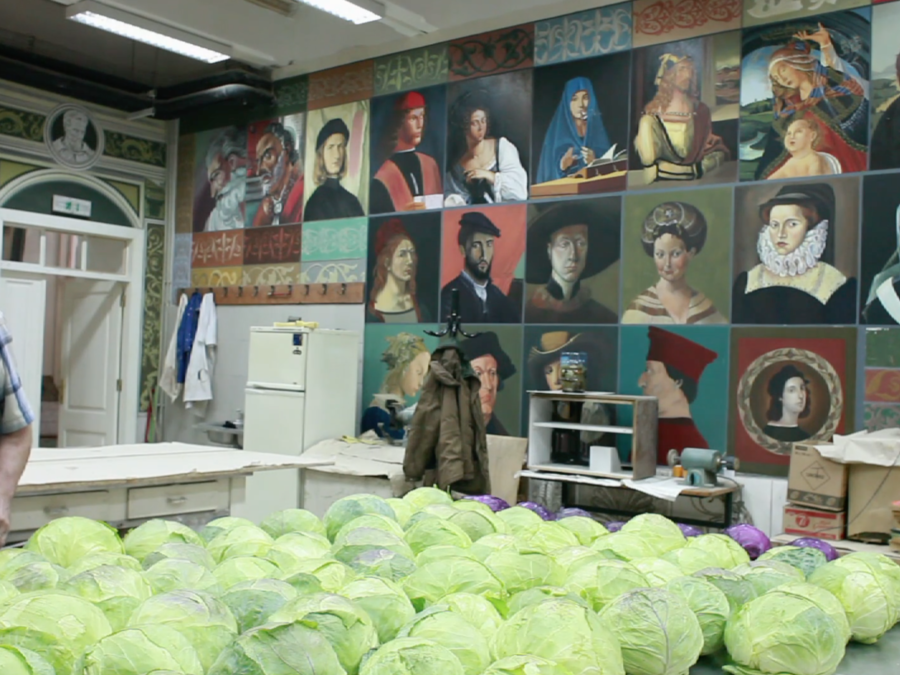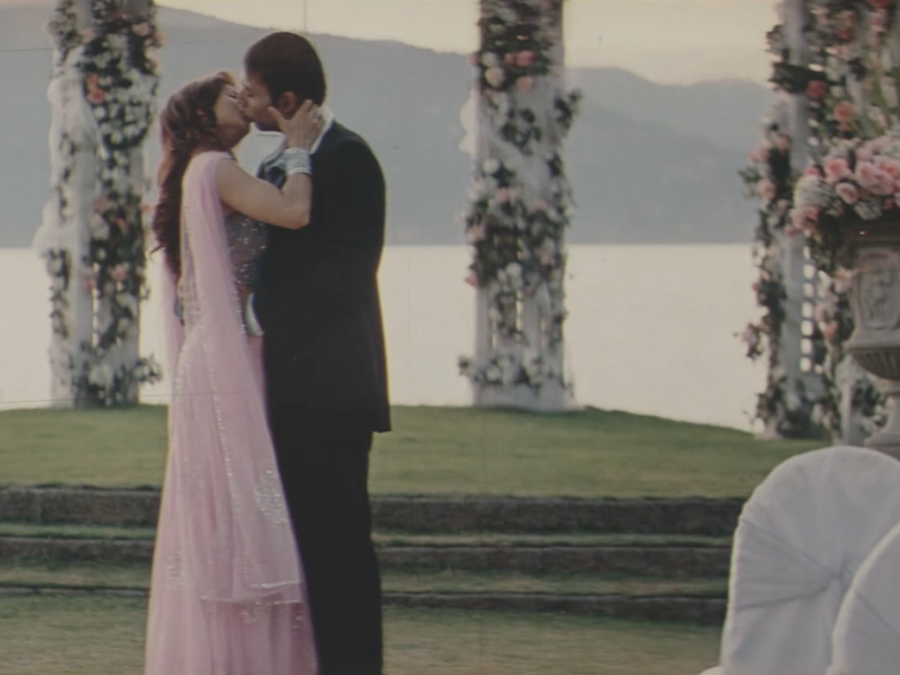In her eight-part video series entitled Lament I-VIII (2013), Anca Munteanu Rimnic plays with the rituals of Romanian traditional funerals, configuring a world of tradition and live craft. The series, including Wish Lament (2013), presents six women carrying out invented rituals. Who are these women? They seem to be moirologists (professional mourners) but are they really? Produced by the project space Salonul de Proiecte (founded by Alexandra Croitoru and Magda Radu in Bucharest), the work involves extras recruited by a casting agency: Women who have played or were willing to play the role of moirologists in films and who work as teachers, lawyers or caregivers in their daily lives. Traditional funeral rituals in the Balkans may involve such moirologists who do not necessarily know the deceased. Their lament has a distinctive intonation, pitch and pace, leaving little room for improvisation. Despised by the younger generations, this traditional occupation is slowly disappearing and becoming a subject of ethnography. Much like professional dancers, moirologists are hired to create a sense of emulation. But while a dancer is hired to encourage the guests to have a good time and dance, moirologists are hired to create an ambiance of sadness and despair at the funeral, to streamline the feeling of grief. The moirologists’ explicit wish in Rimnic’s work is neither to be discovered or conquered, nor to become known, public or pop. Their wish lament “Google Me Not” can be interpreted as an act of ritualized resistance in the face of growing exotification.
Anca Munteanu Rimnic studied art at the Berlin University of Arts (UDK), at the University of California, Los Angeles (UCLA), and at the Art Center College of Design, Pasadena. She has been included in several international group shows, such as at the Cabaret Voltaire, Zurich (2011), 4th Moscow Biennale (2011) and Kunsthalle Wien, Vienna (2014). A comprehensive monograph of her work was published in 2015 by Distanz Verlag, Berlin.
